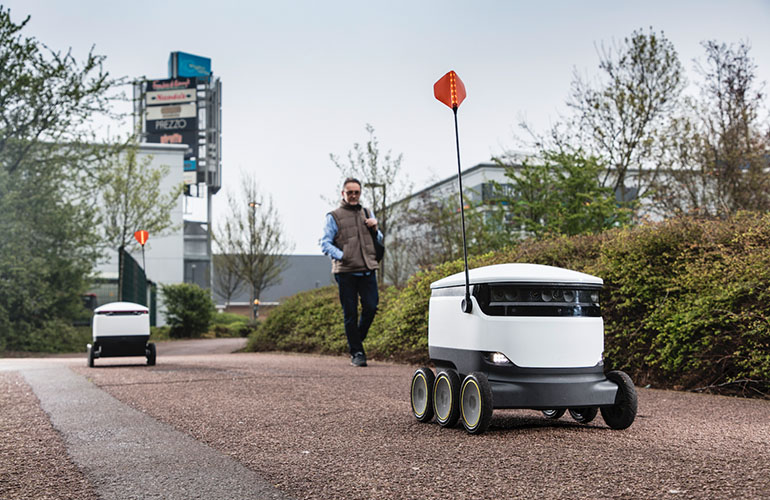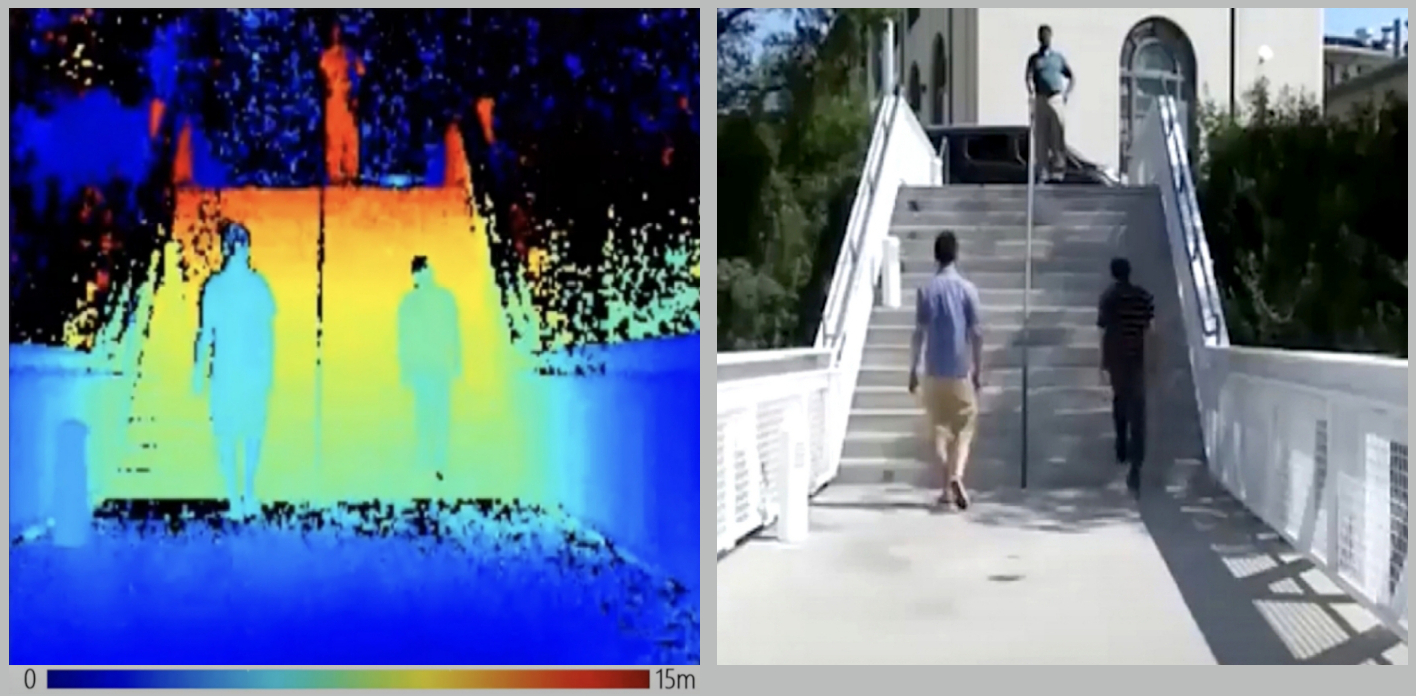|
Listen to this article  |

Starship’s sidewalk deliver robots navigating pre-mapped pavement roads. | Source: Starship Technologies
Starship Technologies has started using ESPROS Photonics Corporation’s epc660 Time-of-Flight chip in its sidewalk delivery robots. Starship’s autonomous robots have been deployed on college campuses and other public areas for last-mile delivery operations.
Sidewalk delivery robots use a combination of sensors, artificial intelligence, machine learning and GPS to navigate in bright daylight and in darkness. ESPROS’ epc660 chip provided strong ambient light operation and high quantum efficiency, which gave Starship a breakthrough in operating autonomously in all ambient light conditions.

The epc660 has excellent performance in full sunlight.
Epc660 can detect objects over long distances while using very little power, making it ideal for sidewalk robots that will need to conserve power as much as they can to increase runtime.
“The future of delivery, today: this is our bold promise,” says Lauri Vain (VP of Engineering at Starship), adding, “With a combination of mobile technology, our global fleet of autonomous robots, and partnerships with stores and restaurants, we are helping to make the local delivery industry faster, cleaner, smarter and more cost-efficient, and we are very excited about our partnership with ESPROS and its unique chip technology.”
Starship Technologies is based in San Francisco with its main engineering office in Estonia. Starship’s sidewalk delivery robots travel up to 4 mph (6.4 kph) and weighs around 80 lbs (176 kg). They can carry around 20 lbs (44 kg) at a time. The robots uses a mixture of computer vision and GPS to know its location. Each one is equipped with twelve cameras, ultrasonic sensors and radar to help it detect obstacles in its path.
The company recently partnered with Grubhub to roll out its sidewalk robot delivery service at five more college campuses: the University of Kentucky, the University of Nevada, Las Vegas, Wayne State University, Southern Methodist University and Fairfield University.
ESPROS is based in Switzerland and has subsidiaries in the U.S. and China. The company develops and produces 3D camera modules based on its own 3D imagers.
Credit: Source link


Comments are closed.